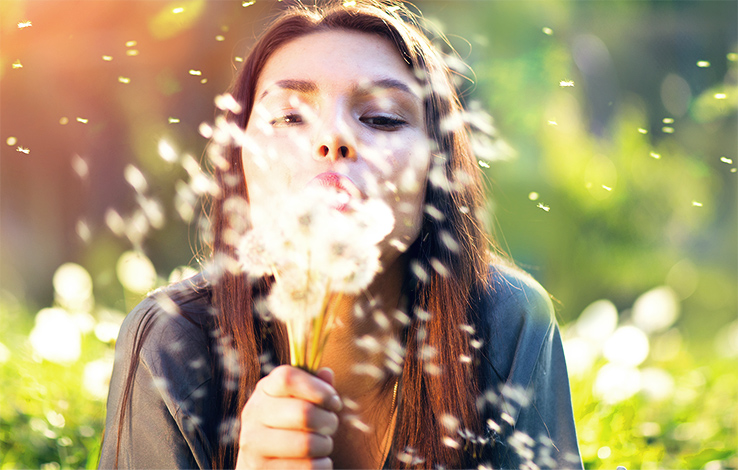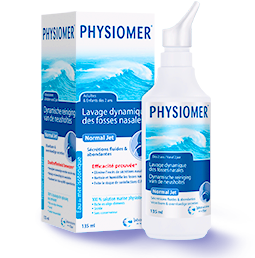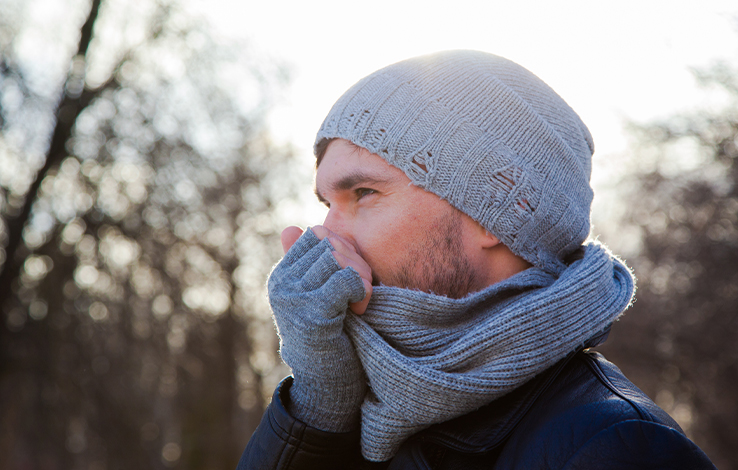Allergic rhinitis causes a multitude of symptoms, often focused around the nasal region. Sneezing, congestion and a runny nose are three common complaints, making every breath an ordeal. Besides nasal irritation and sinus problems, you may suffer from itchy, red or watering eyes, wheezing, chest tightness and shortness of breath.
Seasonal allergies
Allergies can be more prominent at different times of year. Hay fever in particular can make the warmer months particularly tricky to navigate for some people, as the illness can be triggered by pollen from many different plants and grasses. People are most commonly afflicted across spring and summer – hence why hay fever is known as a seasonal allergy.
Because so many people suffer from hay fever – between 10-25% of people in Western society – it makes sense to try and manage the condition and minimise the symptoms where possible.

The pollen problem
Tiny grains of pollen, which measure about 0.006 micrometers, are released by flowering plants in the spring and summer months. Different plants release their pollen at different times of the year, so it can be difficult to pin down exactly what one you are allergic to without a conclusive allergy test.
These tiny bundles of DNA are coated in a strong protein material which protects the genetic matter inside. This coating can trigger an allergic reaction in some people, because the body mistakes it for harmful bacteria or a virus. The body then releases a substance called histamine into the bloodstream to fight the foreign matter, which causes sinus inflammation as well as irritation of the airways and eyes.
These symptoms typically develop within a few minutes of you breathing in the allergen, although sometimes your symptoms may develop gradually over the course of a few hours.
Although these symptoms are a result of our body trying to protect itself, hay fever can make what should be the most enjoyable time of year a real chore. Many people who suffer feel like they have a dose of the flu throughout the whole of summer.
Allergy calendar
For those with seasonal allergies, looking to an allergy calendar can be extremely useful. This generalised calendar shows when the primary allergenic plants flower (and therefore release pollen). It’s important to remember that many variables are at play, including which region you live (more grassland will equal more pollen) and your height above sea level. The precise severity of the pollen season will also vary from year to year, depending on the weather.
The season may also vary for different countries, and within a country it may vary from year to year. For pollen counts, be sure to check your local weather forecast up to five days ahead. As a general rule though, you can expect the allergy calendar for 2020 to look something like this for northern hemisphere countries:
- Tree pollen – late March to mid-May
- Grass pollen – mid-May to July
- Weed pollen – end of June to September
You can find links to national pollen calendars and/or pollen counts for countries in Europe here.
How to manage seasonal allergies
While it’s true that seasonal allergies are a nuisance and disruptive to your daily life, there are ways to manage the symptoms. The most effective way would be to avoid exposure to pollen completely. However, it’s very difficult to do so, particularly during the summer months when you want to get outdoors.
- If your symptoms are mild, treating them as they appear should be sufficient.
- If you suffer quite badly, consider taking antihistamines (which can prevent an allergic reaction) just before you expect the pollen season to begin.
You can also relieve your symptoms naturally in a number of ways, and it’s also possible to prevent symptoms before they start with the right treatment programme.
Prevention tips:
- Before and during pollen season, try to practice regular nasal irrigation with a natural product such as PHYSIOMER®. Made from 100% seawater, it’s clinically proven to help prevent symptoms of allergic rhinitis before they start by keeping the nose clean. PHYSIOMER® Hypertonic is a great solution for most adults and children.
- Try wearing protective wraparound sunglasses to prevent pollen getting in your eyes when your outdoors. This should minimise red, watering, itchy eyes caused by seasonal allergies.
- Take regular showers and change your clothes after going outdoors to remove any pollen on your body.
- While it may not always be possible, staying indoors when the pollen count is high is advisable.
- Apply a small amount of petroleum jelly around your nose to help stop you breathing in grains of pollen.
View the full range of PHYSIOMER® products to find the best solution for you.



